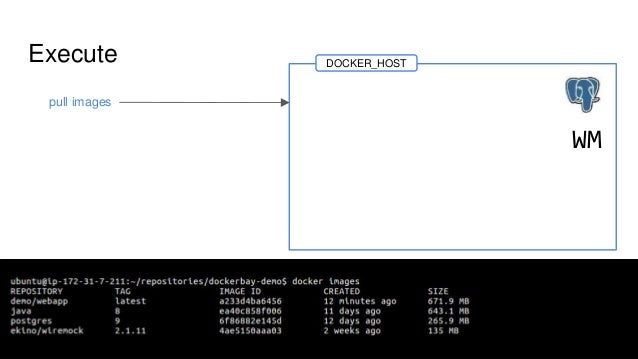

- DOCKER FOR MAC DOCKER_HOST HOW TO
- DOCKER FOR MAC DOCKER_HOST INSTALL
- DOCKER FOR MAC DOCKER_HOST DRIVER
- DOCKER FOR MAC DOCKER_HOST SOFTWARE
But you shouldn’t have to go through the trouble of setting up your own line of distribution if you occasionally need to move one or more containers around. However, this is not often discussed, probably because larger organizations set up their own repositories, where they can customize their own images and distribute across their servers as they see fit. interface.Since Docker containers are little boxes of software, so to speak, you can copy and move them around from computer to computer. To save resources, you can stop these virtual machines from running through the docker-machine stop. These are still virtual machines running on your computer regardless if they are in use or not. So the point of Docker is to run small self-contained instances of specific applications.
DOCKER FOR MAC DOCKER_HOST HOW TO
I'm still learning how to do the rest of this stuff with Docker, but before I got any farther I wanted to document how I got started so other people don't have to spend the same number of hours I did searching around and piecing information together. # eval (docker-machine env default) Step 6: Ready to GoĪt this point you should be ready to start using Docker to pull down images or create your own. # Run this command to configure your shell: Set -gx DOCKER_CERT_PATH "/Users/Samantha/.docker/machine/machines/default" Once the host is up and running, run docker-machine env default and add the environment variables it lists to your current working environment (there may be instructions here on how to get this stuff to get automatically loaded into your shell on start-up).
DOCKER FOR MAC DOCKER_HOST DRIVER
This is going to use the driver that was installed in the previous step to create a new Docker host. With all the components install, you can go ahead and run the command to setup a new host: docker-machine create -driver xhyve default.
DOCKER FOR MAC DOCKER_HOST INSTALL
To install, run brew install docker-machine-driver-xhyve and follow the additional install instructions that are presented at the end of the install process (also find them here). Luckily I was able to find an existing project that allows for this framework to be used as the virtual machine driver: docker-machine-driver-xhyve. This is something that I wanted to take advantage of, thus avoiding the need to install additional kernel extensions to run the virtual machines. However, macOS comes with a special framework (amework) that allows you to create and run virtualized systems from the userland.



Often you will use VirtualBox/VMWare/Parallels/etc to provide the base for the virtual machine to run on.
DOCKER FOR MAC DOCKER_HOST SOFTWARE
The driver does the work of interfacing with the software that runs the virtual machine. To create a virtual machine, you need a driver for it. This tool is used to create and setup virtual machines and is not bundled with the install of Docker, so run brew install docker-machine. This step is a given, brew install docker to get Docker installed locally. This guide provides an alternative way to get the same support without their application. Note: This is entirely for personal usage, I would recommend you use their official Mac app (which does provide the same support through amework) for anything you plan to put into production. This was why I choose to install via Homebrew rather than attempting to install the Docker Mac App. I try to use Homebrew to install everything I can as it gets managed for me. Yesterday (February 26, 2017) I spent some time trying to learn how to use Docker and getting it setup on my computer, this post documents what I did to get it working as there were no straight-forward guides on this process. Setting up Docker on macOS Setting up Docker on macOS


 0 kommentar(er)
0 kommentar(er)
